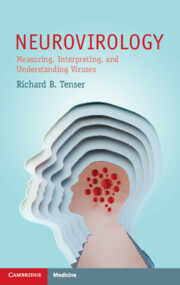Book contents
- Neurovirology
- Neurovirology
- Copyright page
- Dedication
- Contents
- Preface
- 1 Introduction to Virology
- 2 Measurement of Infectious Virus
- 3 Molecular Biology
- 4 The Immune System
- 5 Viral Pathogenesis
- 6 Viral Infections of the Nervous System
- 7 Neurovirology and Immunology
- 8 Experimental Neurovirology
- 9 The Future
- References
- Index
- References
7 - Neurovirology and Immunology
Published online by Cambridge University Press: 13 July 2023
- Neurovirology
- Neurovirology
- Copyright page
- Dedication
- Contents
- Preface
- 1 Introduction to Virology
- 2 Measurement of Infectious Virus
- 3 Molecular Biology
- 4 The Immune System
- 5 Viral Pathogenesis
- 6 Viral Infections of the Nervous System
- 7 Neurovirology and Immunology
- 8 Experimental Neurovirology
- 9 The Future
- References
- Index
- References
Summary
Autoimmune illnesses of the nervous system may follow viral infections and viral vaccines, although the frequency is low. The mechanisms of such illnesses remain unclear but are thought to relate to aberrant responses by the immune system, including B and T lymphocyte responses. Such illnesses are frequently the result of demyelination, of peripheral nervous system myelin or central nervous system myelin.
Multiple sclerosis, due to central nervous system demyelination has been considered as having a viral or post-viral component for many years based on epidemiological grounds and abnormal cerebrospinal fluid (CSF). CSF analysis, particularly the analysis of IgG has been important in the evaluation of autoimmune and viral illnesses of the nervous system.
In some instances, such as progressive multifocal leukoencephalopathy, reactivation of a latent infection results in a demyelinating illness of the brain.
Among the “infections” of the nervous system none are probably more unusual than the prion illnesses. Prions, the cause of illnesses such as kuru, Creutzfeldt–Jakob disease and scrapie are caused by abnormal proteins, without DNA or RNA being present. What is strange is that the illnesses can be transmitted, like infections. But some prion illnesses can be genetically transmitted.
Keywords
- Type
- Chapter
- Information
- NeurovirologyMeasuring, Interpreting, and Understanding Viruses, pp. 142 - 179Publisher: Cambridge University PressPrint publication year: 2023



